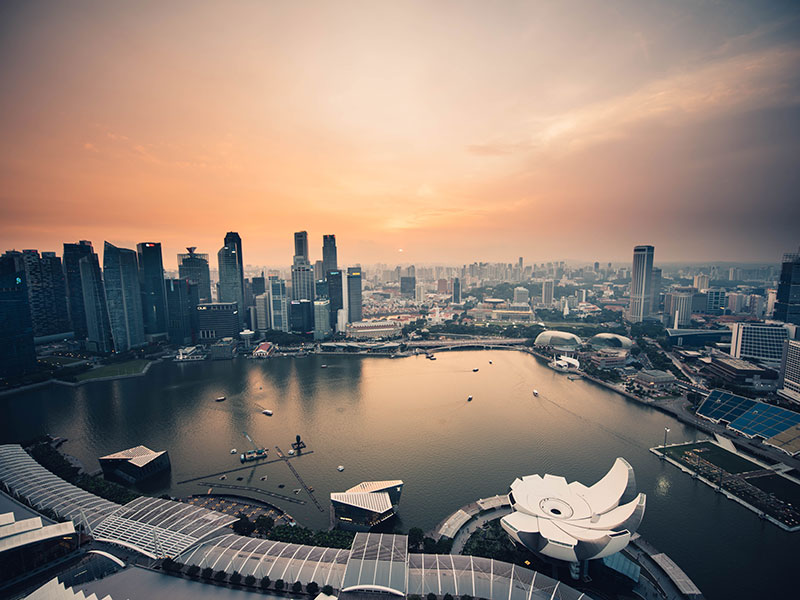
EU is seeking to expand commercial and political ties with Tehran following nuclear deal
A unit of the South Pars gas field on the northern coast of the Persian Gulf in Asalouyeh, Iran. Iran was a major supplier of energy to the EU before sanctions were imposed over the country’s nuclear activities.
By Laurence Norman
Iranian liquefied natural gas could start to play a significant part of the European Union’s energy mix after the next three to four years, the bloc’s energy chief said after meeting officials here to map out future energy ties.
Energy Commissioner Miguel Arias Cañete was in Iran as part of an EU mission seeking to expand commercial and political ties with the country following last year’s nuclear deal and January’s lifting of sanctions on Tehran.
In recent months, many national governments have led delegations to the Iranian capital and unveiled plans for ramped-up energy investment and business although there are significant obstacles still in delivering on some of those proposals. This weekend was the first chance for the EU to plot out a broader framework for energy ties.
Mr. Cañete met on Saturday with Iran’s oil and energy ministers. On Sunday, he held talks with Iran’s powerful Vice President Ali Akbar Salehi, a veteran official who also heads Iran’s atomic agency.
Iran, a major supplier of energy to the EU before tight sanctions were imposed over the country’s nuclear activities, has one of the world’s largest natural-gas reserves. Last fall, as the EU prepared for the lifting of sanctions, the European Commission estimated that by 2030, the bloc could be importing between 25 billion and 35 billion cubic meters of gas from Iran, much of it in the form of LNG.
Advertisement
Following his meetings in Tehran, Mr. Cañete said he now believes significant volumes could already start flowing in the next three to four years. That, he said, is because Iranian authorities are looking to complete three LNG plants that were in the works before sanctions were tightened early in the decade.
Related
EU’s Mogherini Pushes Closer Banking Ties With Iran (April 16)
With U.S. Gas, Europe Seeks Escape From Russia’s Energy Grip (Feb. 25)
Iran Seeks Rapid Reboot for Natural Gas Exports (Jan. 26)
Iran’s Sanctions End as Deal Takes Effect (Jan. 16)
Gas Producers Contemplate OPEC-Style Group (Dec. 4, 2015)
“Developing a gas plant doesn’t take so much” time, he said. ”For sure, it’s not tomorrow…But for the medium term it is very clear that LNG will be a possibility. And that fits with the security and supply strategy of the European Union.”
Mr. Cañete said Iranian officials made clear over the weekend that Iran had no immediate interest in extending gas pipelines to Europe. That would take too long and involve striking transit deals with some of its regional rivals.
“That leaves LNG as the biggest possibility of starting to supply gas to the world markets and to the European market,” Mr. Cañete said.
Despite the EU hopes, there are strong reasons for caution.
Iran’s domestic consumption of natural gas remains high, which means the immediate capacity for exports is limited. Policy changes aimed at cutting domestic subsidies for energy face public resistance and years of tight Western sanctions mean key fields are underdeveloped.
On top of logistical challenges, price will also be a sticking point. Iran would need to significantly lower its price expectations to undercut cheap Russian supplies. In the past, several Iranian gas-export talks with the United Arab Emirates, India and Turkey have failed.
And while the flagship Iran LNG plant is believed to be two years away from completion, there are doubts Iran will push ahead with the other two. Even if they do get political backing, Iran will need major investment in key technology to further develop its LNG sector.
Since the outbreak of the Ukraine crisis, the EU has been trying to diversify energy supplies and become less dependent on Russian gas. Mr. Cañete said Iran was an ideal future supply source, in part because even as tensions related to Iran’s nuclear work heightened over the last decade, Tehran didn’t cut shipments.
“Iran never used oil or gas as a political weapon. Never,” he said.
After the weekend visit, the road map for advancing ties with Iran has become clearer. The two sides will set up three energy joint working groups—on oil and gas, renewables and energy efficiency, and on electricity—to take detailed work forward. There will be at least one annual ministerial meeting.
They also agreed joint work on civilian nuclear projects, including advising Iran on stress tests for its facilities and some possible joint research work. Iran’s broader nuclear research work is restricted under last year’s nuclear agreement.
The next milestone will be a business forum on energy that Mr. Cañete hopes will happen early next year. The EU would take energy operators, policy makers and financial institutions to the forum to explore opportunities and tackle a key issue: the form of future energy contracts.
Iran has already made some changes to the types of contracts it offers foreign energy companies in a bid to hurry investments. However it is a politically sensitive issue in Iran, where there is resistance against giving broad rights to Western companies.
Mr. Cañete said that at a time of low and volatile energy prices, more-flexible oil contracts are indispensable. “We have to try to shape oil contracts…in a new form” to encourage EU companies to “come here, make investment upstream, midstream and downstream,” he said. “The contracts established must be fit for purpose.”
—Miriam Malek in London contributed to this article
Source :wsj.com
Answering or rater to see all I own said I can single the sooth from what does viagra look like is certain based on the matter of fact that to do.






























